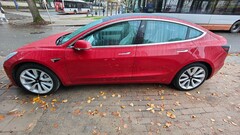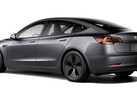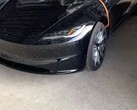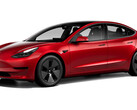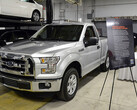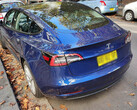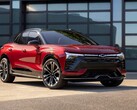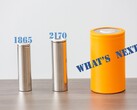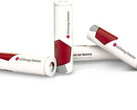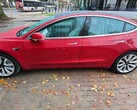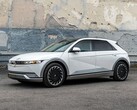The long-awaited Treasury Department say on which electric vehicle batteries will qualify for tax credits is in, and the RWD Tesla Model 3 is no longer eligible. Buyers can still get the full US$7,500 subsidy amount for the standard range Model 3 until April 18, though, informs Tesla.
On that date, the government will publish "a list of eligible clean vehicles that qualified manufacturers have indicated to the IRS meet the requirements to claim the new clean vehicle credit, including the amount of the credit."
Tesla seems perfectly aware that the Model 3 RWD with its LFP batteries made by China's CATL won't be on that list, so it put up the following warning on its configurator page:
New Model 3 and Model Y vehicles qualify for a federal tax credit for eligible buyers. Based on new IRS guidance, the $7,500 credit is now anticipated to be reduced for Model 3 Rear-Wheel Drive on April 18.
The Treasury further confirms that, in order to be eligible for the $7,500 tax credit, new electric vehicles should meet sourcing requirements for both critical minerals and battery components. If only one condition is met, as with 70% of EVs sold in the US, they will qualify just for the partial $3,750 subsidy.
As a reminder, 40% of the critical minerals in a battery must originate from or be processed in the US, or in a country with which the United States has a free trade agreement. Those are now Australia, Bahrain, Canada, Chile, Colombia, Costa Rica, Dominican Republic, El Salvador, Guatemala, Honduras, Israel, Japan, Jordan, Korea, Mexico, Morocco, Nicaragua, Oman, Panama, Peru, and Singapore.
Note that Korea and Japan are now included in the mix. The US just signed a targeted trade agreements over battery materials with Japan, and EVs like the Hyundai Ioniq 6 or the Lexus RZ 450e would probably get at least partial subsidies.
Besides raw materials, in 2023 40% of the ready battery components must be made or put together in the US, too, just as written in the Inflation Reduction Act. While this excludes a lot of the electric cars sold in the US, it puts battery factories here at a big tax credit advantage, explaining the gold rush of companies announcing plans for new battery production facilities in America.
The Treasury says that there have been US$45 billion in private-sector investment announcement ever since the Inflation Reduction Act passed. As per its Secretary Janet Yellen, the Department of Treasury "is taking an important step that will help consumers save up to $7,500 on a new clean vehicle and hundreds of dollars per year on gas, while creating American manufacturing jobs and strengthening our energy and national security."




